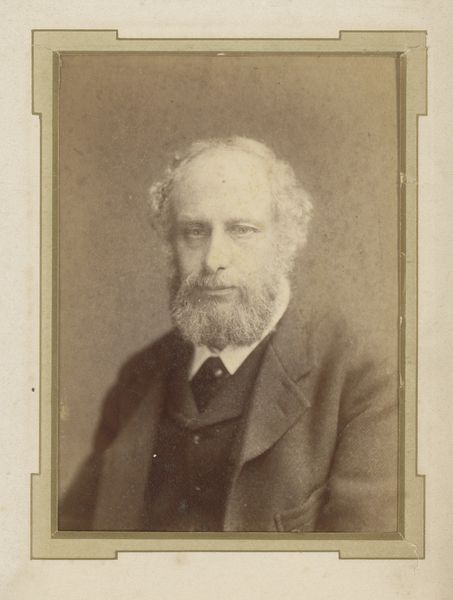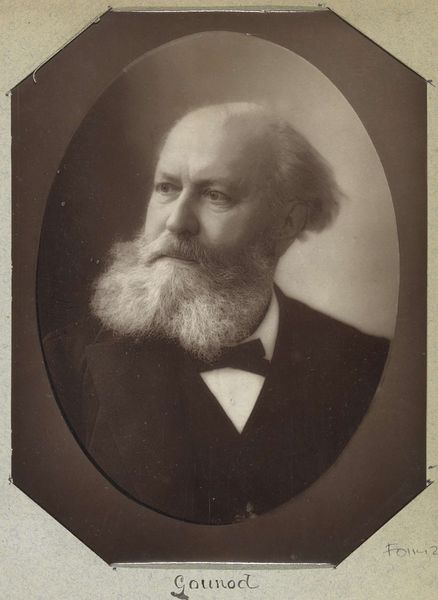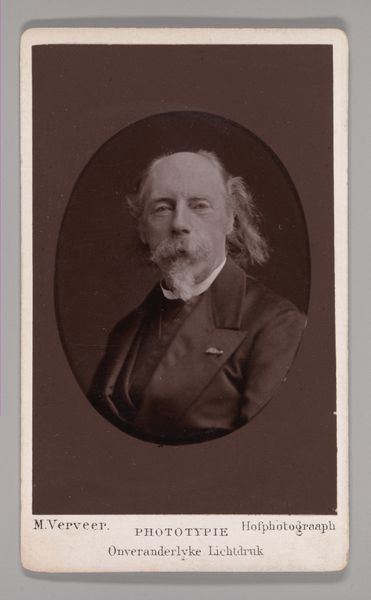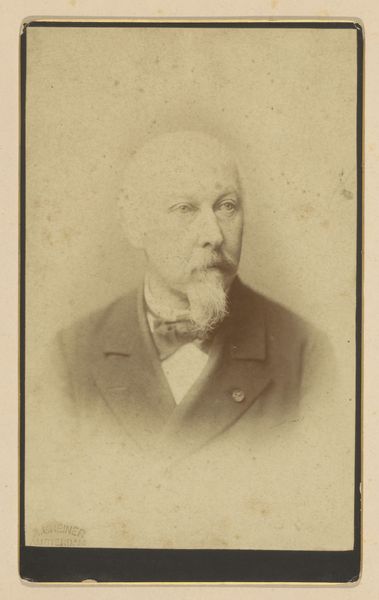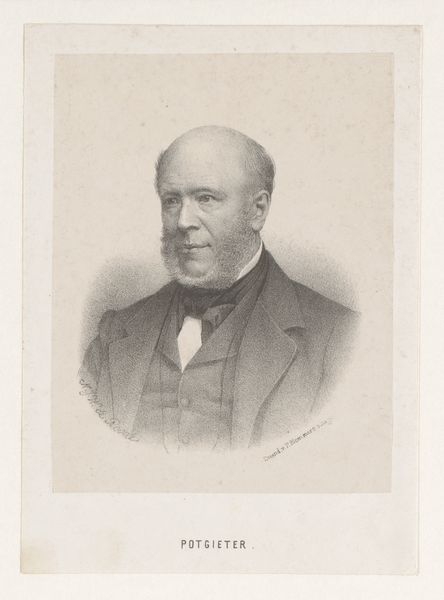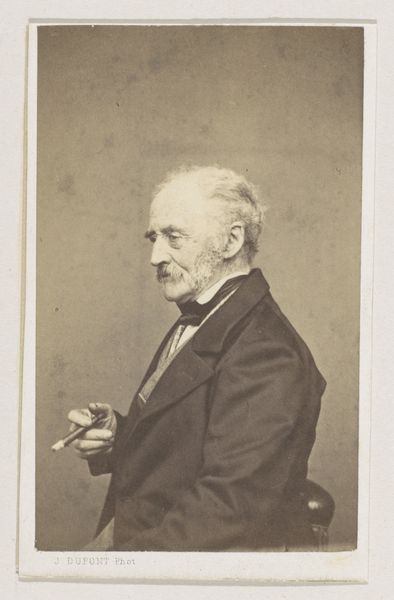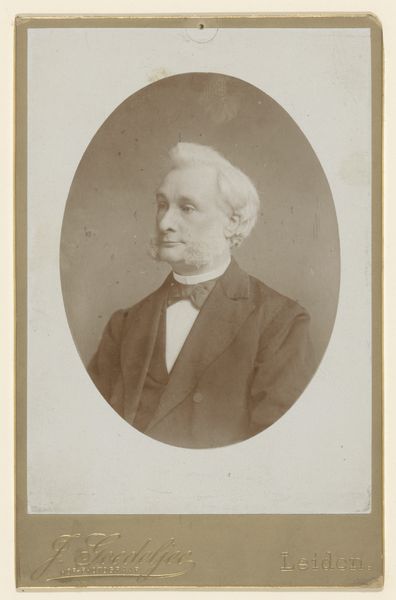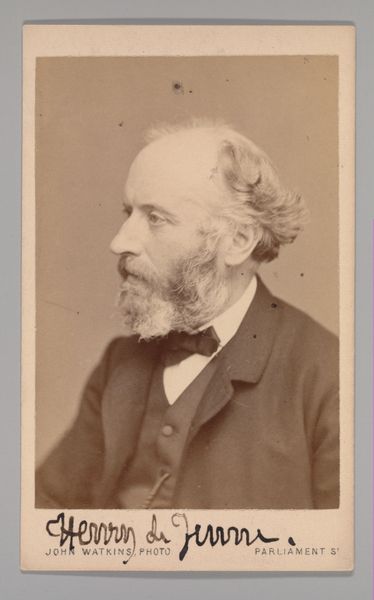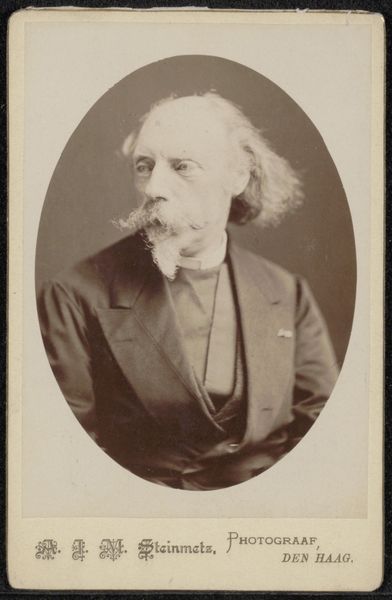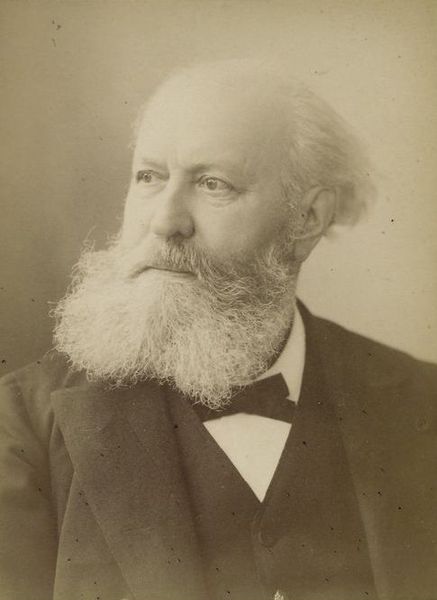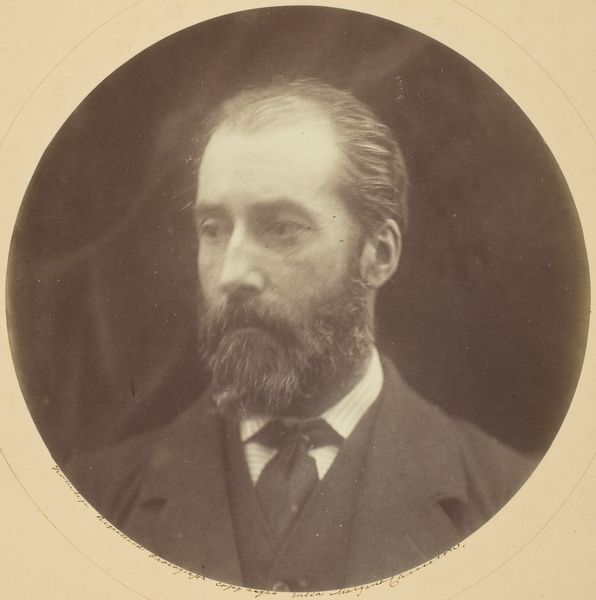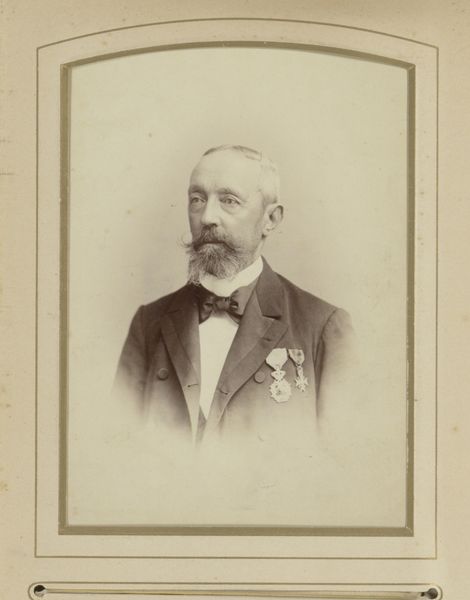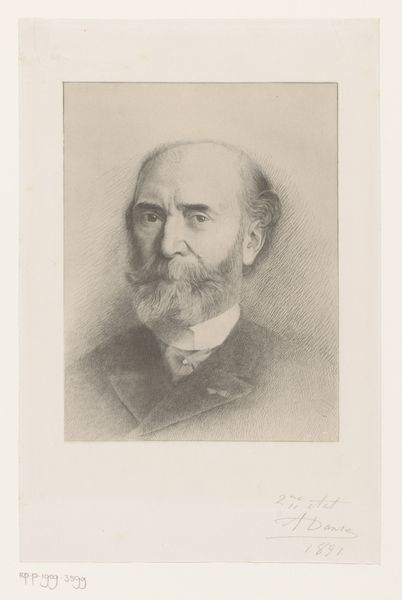
His Excellency the Marquess of Dufferin and Ava c. 1893
0:00
0:00
daguerreotype, photography
#
portrait
#
daguerreotype
#
photography
#
realism
Dimensions: 24.5 × 19.5 cm (image); 44.8 × 37.2 cm (album page)
Copyright: Public Domain
Curator: The sepia tones lend this portrait an immediate gravitas. The composition and soft lighting give it a sense of calm contemplation. It feels incredibly personal, almost as if you've stumbled upon a cherished photograph from a family album. What are your first impressions? Editor: I'm struck by the weight of colonial history it carries. This is "His Excellency the Marquess of Dufferin and Ava," photographed around 1893. Dufferin served as Governor-General of Canada and Viceroy of India, positions intrinsically tied to British imperial power. Curator: That's an interesting take. It's at the Art Institute of Chicago and what I'm drawn to are the technical achievements and creative exploration with photography at the time. Look at the depth captured in this image and this photogravure print gives the image such range. I appreciate the process. It speaks to its time and what was being made available. Editor: Exactly! It was made using a process of photogravure on paper, capturing minute details that would've conveyed power, prestige, and empire. Think about it. Portraits like these were vital tools of representation for figures who were often thousands of miles away from the people they governed. Curator: The photographer, Henry Herschel Hay Cameron, had a unique approach to light and shadow in this portrait. The texture of his beard, the glint of light in his eye… Cameron captured an expression of intelligence and maybe a hint of world-weariness, don't you think? I find it interesting as a study of character through photographic techniques. Editor: True, but that interpretation somewhat detaches the image from the reality of the man. The world-weariness could easily stem from administering colonial rule, the imposition of laws and policies that exploited entire populations. Looking at this, I keep in mind what his policies enacted for other peoples. Curator: So, is it possible for the work to speak on both sides, without separating either lens? Editor: It requires acknowledgement of the multifaceted layers and complexity and sometimes contradiction. It invites dialogue of empire, artistry, technique and power. Curator: Thanks for that perspective. Editor: Thanks.
Comments
No comments
Be the first to comment and join the conversation on the ultimate creative platform.
